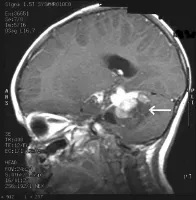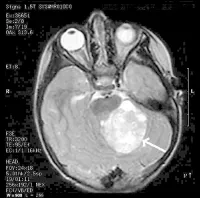Want your child to do better in school? Take a close look at diet. Certain "brain foods" may help boost a child's brain growth -- plus improve brain function, memory, and concentration.
In fact, the brain is a very hungry organ -- the first of the body's organs to absorb nutrients from the food we eat, explains Bethany Thayer, MS, RD, a Detroit nutritionist and spokeswoman for the American Dietetic Association (ADA).
"Give the body junk food, and the brain is certainly going to suffer," she tells WebMD.
Growing bodies need many types of nutrients -- but these 10 superfoods will help kids get the most from school.
1. Brain Food: Salmon
Fatty fish like salmon are an excellent source of the omega-3 fatty acids DHA and EPA -- both essential for brain growth and function, says Andrea Giancoli, MPH, RD, a Los Angeles nutritionist and ADA spokeswoman.
In fact, recent research has also shown that people who get more of these fatty acids in their diet have sharper minds and do better at mental skills tests.
While tuna is also a source of omega-3s, it's not a rich source like salmon, Giancoli tells WebMD.
"Tuna is definitely a good source of lean protein, but because it's so lean it's not very high in omega-3s like canned salmon is," Giancoli tells WebMD. Also, albacore "white" tuna has more mercury than canned light tuna, so the EPA advises eating no more than 6 ounces of albacore tuna weekly.
Eat more salmon: Instead of tuna sandwiches, make salmon salad for sandwiches -- canned salmon mixed with reduced-fat mayo or non-fat plain yogurt, raisins, chopped celery, and carrots (plus a little Dijon mustard if your child likes the taste). Serve on whole-grain bread -- which is also a brain food.
Soup idea: Add canned salmon to creamy broccoli soup -- plus frozen chopped broccoli for extra nutrition and soft texture. Boxed soups make this an easy meal, and are generally low in fat and calories, Giancoli says. Look for organic boxed soups in the health food section.
Make salmon patties -- using 14 oz. canned salmon, 1 lb. frozen chopped spinach (thawed and drained), 1/2 onion (finely chopped), 2 garlic cloves (pressed), 1/2 teaspoon salt, pepper to taste. Combine ingredients. Mix well. Form into small balls. Heat olive oil in pan, flatten spinach balls with spatula. Cook over medium heat. Serve over brown rice (instant or frozen).
2. Brain Food: Eggs
Eggs are well-known as a great protein source -- but the egg yolks are also packed with choline, which helps memory development.
Eat more eggs: Send your child off to school with a grab-and-go breakfast egg burrito. Try breakfast for dinner one night a week -- scrambled eggs and toast. Make your own egg McMuffin at home: just put a fried egg on top of a toasted English muffin, topped with a slice of low-fat cheese.
3. Brain Food: Peanut Butter
"Peanuts and peanut butter are a good source of vitamin E, a potent antioxidant that protects nervous membranes -- plus thiamin to help the brain and nervous system use glucose for energy," says Giancoli.
Eat more peanut butter: For a twist on an old favorite, make a peanut butter and banana sandwich. Dip apple slices in peanut butter. Or, top off your favorite salad with a handful of peanuts.
4. Brain Food: Whole Grains
The brain needs a constant supply of glucose -- and whole grains provide that in spades. The fiber helps regulate the release of glucose into the body, Giancoli explains. "Whole grains also have B-vitamins, which nourish a healthy nervous system."
Eat more whole grains: It's easy to find more whole grain cereals these days (make sure a whole grain is the first ingredient listed). But also think outside the box -- and try whole wheat couscous for dinner with cranberries, or low-fat popcorn for a fun snack, she suggests.
Whole-grain bread is a must for sandwiches. Switch to whole-grain tortillas and chips for quesadillas, wraps, and snacks.
5. Brain Food: Oats/Oatmeal
Oats are one of the most familiar hot cereals for kids and a very nutritious “grain for the brain,” says Sarah Krieger, MPH, RD, LD/N, a St. Petersburg, Fla. consultant and ADA spokeswoman. "Oats provide excellent energy or fuel for the brain that kids need first thing in the morning."
Loaded with fiber, oats keep a child’s brain fed all morning at school. Oats also are good sources of vitamin E, B-vitamins, potassium and zinc -- which make our bodies and brains function at full capacity.
Eat more oats: Top hot oatmeal with pretty much anything -- applesauce and cinnamon, dried fruit and soy milk, sliced almonds and a drizzle of honey, fresh banana and a dash of nutmeg with skim milk, Krieger suggests.
Cooking? Throw a handful of dry oats into a smoothie to make it thick -- or into pancake, muffin, waffle or a granola bar recipe.
Here’s a simple snack kids can make: 1 cup peanut butter, ½ cup honey, 1 cup dry oats, ½ cup dry milk powder. Mix it up with your hands -- then put a tablespoon between 2 apple or pear slices for a fun and different sandwich!
6. Brain Food: Berries
Strawberries, cherries, blueberries, blackberries. "In general, the more intense the color, the more nutrition in the berries," Krieger says. Berries boast high levels of antioxidants, especially vitamin C, which may help prevent cancer.
Studies have shown improved memory with the extracts of blueberries and strawberries. "But eat the real thing to get a more nutritious package," Krieger says. "The seeds from berries are also a good source of omega-3 fats.."
Eat more berries: Add berries to veggies that may need a flavor boost -- like sliced sweet cherries with broccoli or strawberries with green beans. Toss berries into a green salad. Add chopped berries to a jar of salsa for an excellent flavor surprise.
More berry ideas: Add berries to yogurt, hot or cold cereal, or dips. For a light dessert, top a mound of berries with nonfat whipped topping, Krieger suggests.
7. Brain Food: Beans
Beans are special because they have energy from protein and complex carbs -- and fiber -- plus lots of vitamins and minerals, Krieger says. "These are an excellent brain food since they keep a child's energy and thinking level at peak all afternoon if they enjoy them with lunch."
Kidney and pinto beans contain more omega 3 fatty acids than other beans -- specifically ALA, another of the omega-3’s important for brain growth and function, says Krieger.
Eat more beans: Sprinkle beans over salad and top with salsa. Mash vegetarian beans and spread on a tortilla. Mash or fill a pita pocket with beans -- and add shredded lettuce and low-fat cheese. Add beans to spaghetti sauce and salsa. Infants love mashed beans with applesauce!
8. Brain Food: Colorful Veggies
Tomatoes, sweet potatoes, pumpkin, carrots, spinach -- vegetables with rich, deep color are the best sources of antioxidants that keep brain cells strong and healthy, Thayer says.
Eat more veggies: Try sweet potato fries: Cut up in wedges or sticks. Spray them with vegetable oil cooking spray and then bake them in the oven (400 degrees, 20 minutes or until they start to brown).
Make pumpkin muffins: Mix 1 15-ounce can of pumpkin with a box of your favorite cake or muffin mix. Stir the two ingredients together and follow the directions.
Baby carrots and tiny tomatoes fit nicely into lunch bags. Kids love spinach salads with lots of stuff in them -- like strawberries, mandarin oranges, sliced almonds. Another trick: Sneak all sorts of chopped veggies into spaghetti sauce, soups, and stews.
9. Brain Food: Milk & Yogurt
Dairy foods are packed with protein and B-vitamins -- essential for growth of brain tissue, neurotransmitters, and enzymes. "Milk and yogurt also provide a bigger punch with both protein and carbohydrates – the preferred source of energy for the brain," Thayer says.
Recent research suggests that children and teens need 10 times more the recommended dose of vitamin D -- a vitamin that benefits the neuromuscular system and the overall life cycle of human cells.
Eat more dairy: Low-fat milk over cereal -- and calcium- and vitamin D-fortified juices -- are easy ways to get these essential nutrients. Cheese sticks are great snacks.
Low-fat yogurt parfaits are also fun. In a tall glass, layer yogurt with berries (fresh, frozen, or dried) and chopped nuts (almonds or walnuts), Thayer suggests.
10. Brain Food: Lean Beef (or Meat Alternative)
Iron is an essential mineral that helps kids stay energized and concentrate at school. Lean beef is one of the best absorbed sources of iron. In fact, just 1 ounce per day has been shown to help the body absorb iron from other sources. Beef also contains zinc, which helps with memory.
For vegetarians, black bean and soy burgers are great iron-rich meatless options. Beans are an important source of nonheme iron -- a type of iron that needs vitamin C to be absorbed. Eat tomatoes, red bell pepper, orange juice, strawberries, and other "Cs" with beans to get the most iron.
For a burger-less source of iron -- try spinach. It's packed with nonheme iron, too.
Eat more iron: For dinner, grill kebobs with beef chunks and veggies. Or stir-fry a bit of beef with kids' favorite veggies. Grill black bean or soy burgers, then top with salsa or a tomato slice. Or, chow down on a spinach salad (with mandarin oranges and strawberries for vitamin C).



